The ideal investment tracking app makes managing investments a breeze. Investment apps can track not only the portfolio’s performance, but also its fees, asset allocation and projected future growth. What follows are some of the best investment tracking apps based on numerous factors, including cost, features and ease of use.
Note that I have used all of these options for years. I typically use several at one time just to keep up with new features. Empower and Kubera are my two favorites, but that may change as other apps introduce new tools, particularly if they include AI in some interesting way.
Summary of Best Investment Tracking Apps
Best Free Investment Tracker
Empower
Price: Free
Empower is by far the best free investment and portfolio management app. It’s easy to use and provides information on asset allocation, performance, and fees via interactive charts and graphs.
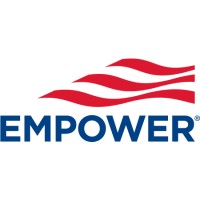
Best for HNWIs
Kubera
Price: 14-day free trial; $249/year
Kubera is the most sophisticated investment tracking tool on the list. It uses multiple industry-standard tools to connect accounts. It can also track the most types of assets, including crypto, domains, vehicles and real estate.

Personal Capital (Now Empower)
Empower (formerly Personal Capital) is the best option for most people in my opinion. It’s the investment tracking app I’ve used for more than a decade. It’s the most popular for several reaons.
First, once you link your investment accounts to Empower, it automatically downloads all of your transaction and balances. It can link both retirement and non-retirement accounts.
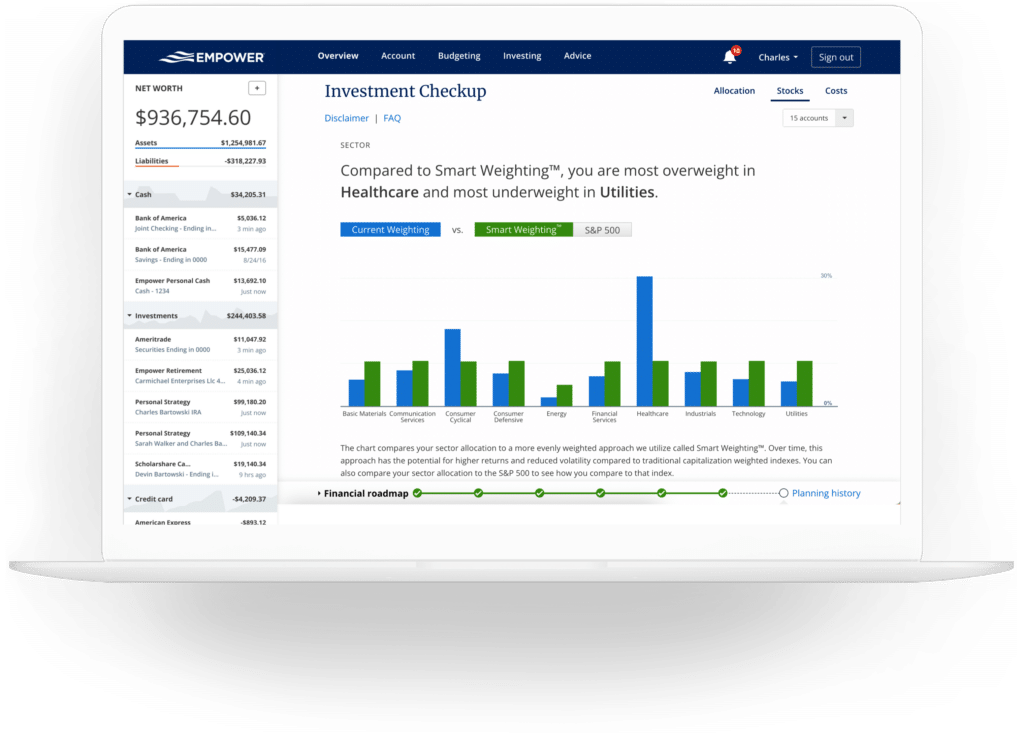
Second, in addition to performance data, it gives you data on the fees charged by each of your investments and how those fees will affect your wealth over time. Third, it provides an interactive graph of your asset allocation. Finally, It integrates all of your data into a robust retirement calculator you can use to plan your future retirement.
You can link bank accounts, credit cards, investment accounts and even the value of your home through Zillow. In this regard, Empower enables you to manage all of your finances, not just your investments.
Kubera
Kubera is the app I’ve been using for that past few years. It’s both the easiest tool to use and in many ways the most sophisticated.
Its visual presentation is clean and simple. You can organize your investments in sheets. For example, you could separate retirement, taxable, HSA and real estate. It provides a net worth summary with graphs. You can also track insurance policies, store important documents in its virtual “Safe Deposit Box,” and add “beneficiaries” who can receive all the information in your account should you die.
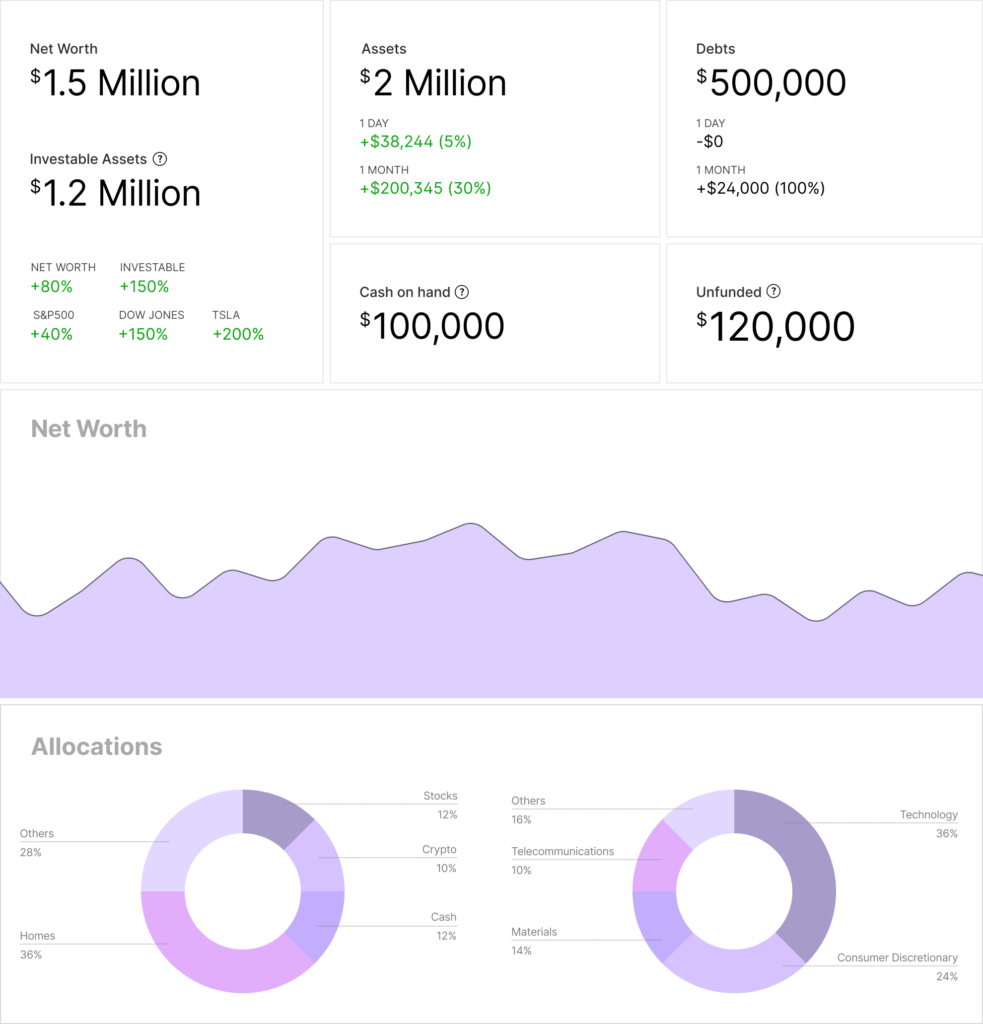
So what about its sophistication? First, unlike many apps that use just one way to connect accounts, Kubera uses several industry-standard aggregators to connect investment, banking and other financial accounts. The result is more accurate updates.
Second, Kubera has features to track a variety of assets. In addition to financial accounts, you can track vehicle values with just a VIN, any domain, and real estate. Unlike other apps that just pull in the value from Zillow, Kubera uses several tools to analyze a property’s value.
Third, Kubera offers a number of ways to track crypto. You can connect crypto exchanges and wallets, as well as coins.

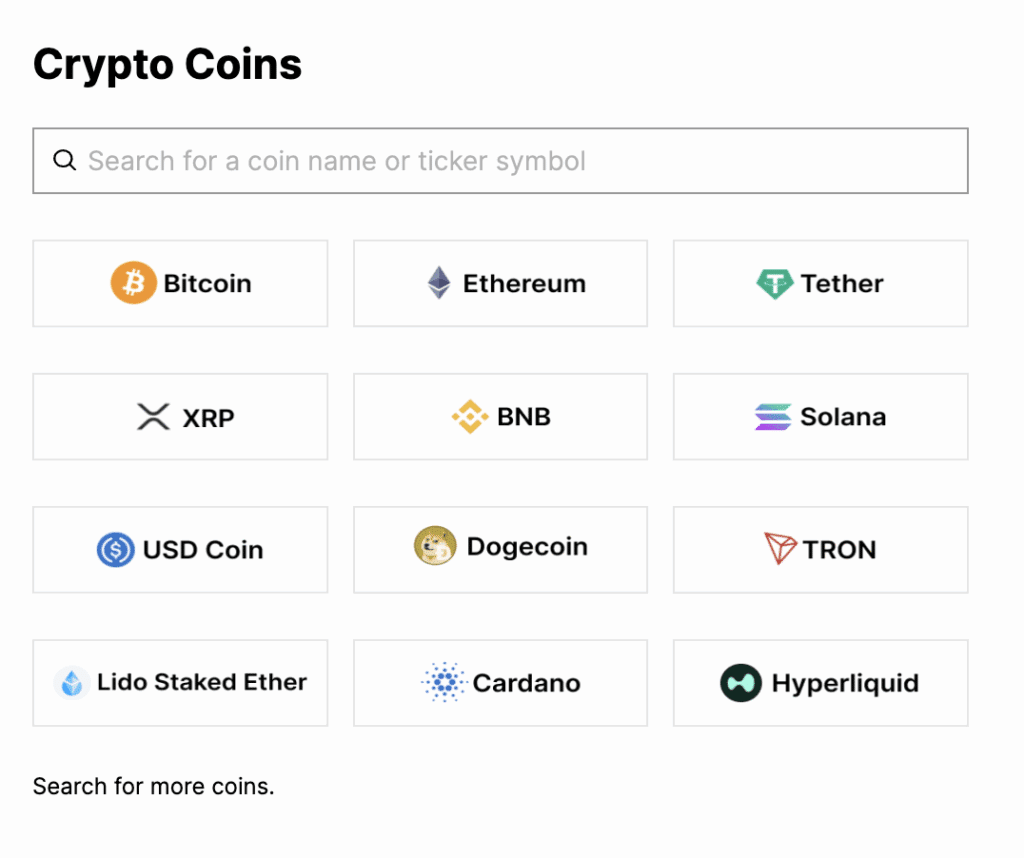
Finally, Kubera uses AI to scan a PDF, CSV file or even a screenshot to easily upload financial assets.
Kubera costs $249/year, and they offer a 14-day free trial.
Monarch Money
Monarch Money is best known as a budgeting app. It’s one of the best available today, and my wife and I use it to manage our finances. What some don’t realize is that it can track your investments, too.
Setting up investment tracking is simple. You connect your investment accounts to Monarch the same way you’d connect a bank account or credit card. Monarch recognizes it as an investment account and segregates into the Investment section of the app.
Here’s what it looks like:
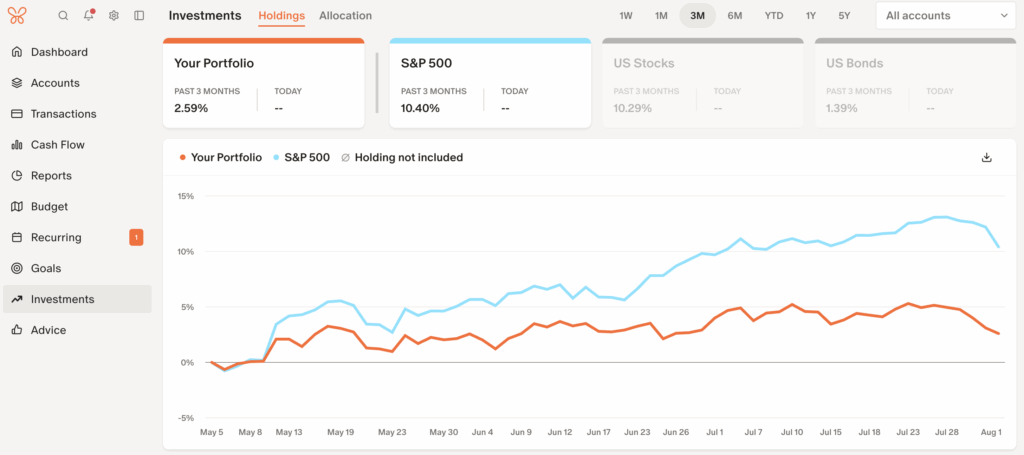
Monarch tracks your returns and individual investments. It also keeps track of how much cash you have in your investment accounts. The one downside is that its asset allocation features are limited.
Promo Code: Get 50% off the first year subscription with promo code ROB50.
Stock Rover
For those with more complicated stock portfolios, Stock Rover is an excellent option. This tool has a learning curve, but it provides video guides and plenty of help. Stock Rover provides a wealth of data on stocks, ETFs, and mutual funds and offers countless ways to evaluate individual investments or your portfolio as a whole.
For example, here’s just a fraction of the data available for Apple, a stock I own:
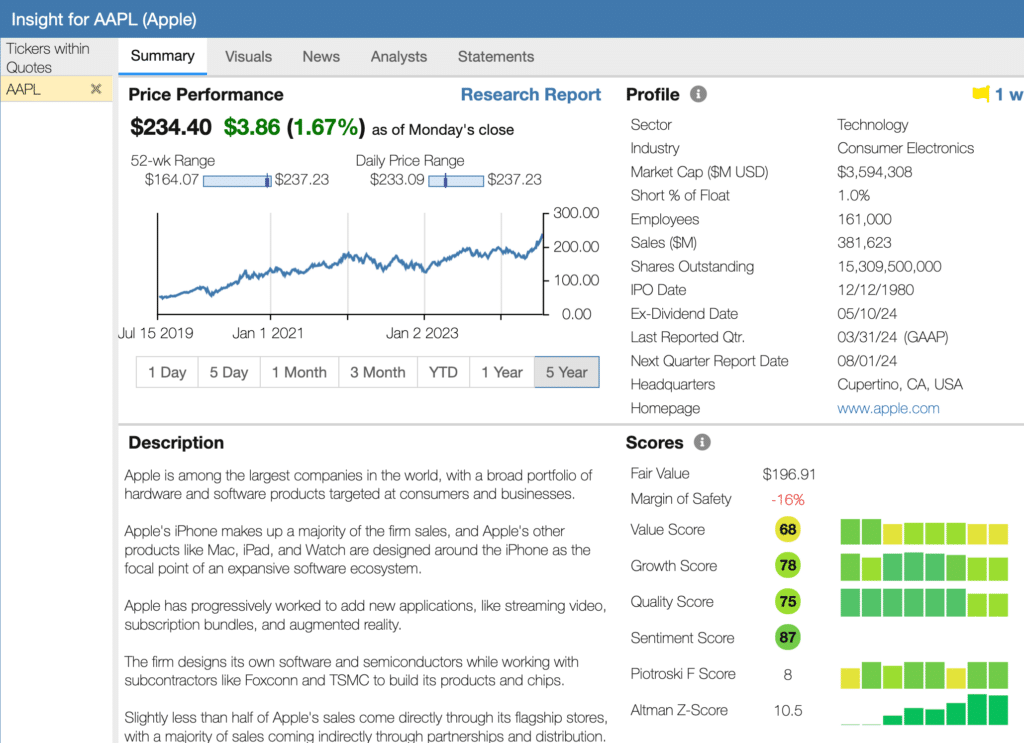
Beyond the above summary, you can get details on a company’s financials, news and analyst data.
The app enables you to connect all your investment accounts for automatic updates. Alternatively, you can enter your portfolio manually. It also offers pre-set portfolios you can use for evaluation purposes.
Frankly, the list of features is too long for one article, but include earnings calendar, alerts, stock ratings, future income estimates and model portfolios.
Stock Rover offers a free tier. Paid tiers range from $79.99/year to $279.99/year.
Google Sheets
For those who don’t want to connect their financial accounts to an app, Google Sheets is ideal. Using the Google finance function, you can pull in data on mutual funds, ETFs and stocks. This can include a fund or company’s name, its price, performance, and its expense ratio.
For those that don’t want to create their own, I’ve created a free investment tracking spreadsheet that you can use.
Morningstar
Morningstar is another tool that I’ve used for many years. In fact, I’ve created a YouTube video course that walks through how to use the robust tools offered by Morningstar. The tools include a portfolio tracker.
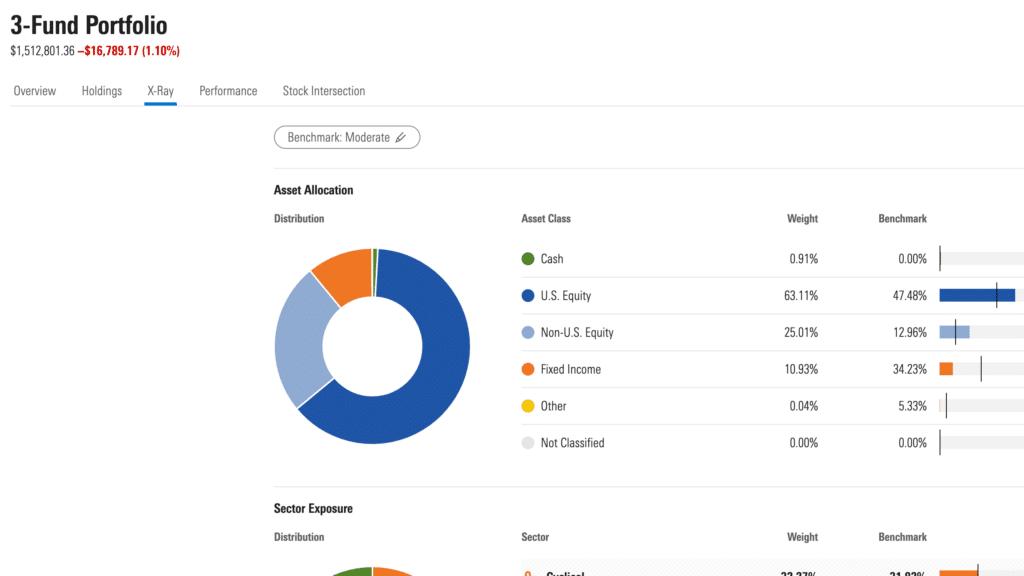
The one downside is that the tool only tracks performance for manually entered accounts. You can link your retirement and brokerage accounts, and you can analyze your investments using Morningstar’s industry-leading tools, but you won’t see performance data. It’s a major shortcoming.
Morningstar Investor costs $249 a year or $34.95 a month. They are offering $50 off your first year, bringing the price to $199. Morningstar also offers a 7-day free trial.
Quicken Premier
Quicken is arguably the longest surviving budgeting and personal finance software. I was using it more than 20 years ago. Today with Quicken Premier you can track your investments, including your performance and realized and unrealized gains. And it has tools to make preparing your taxes easier. It also pulls in data from Morningstar. On the downside, however, there’s an annual fee for the software of approximately $75.
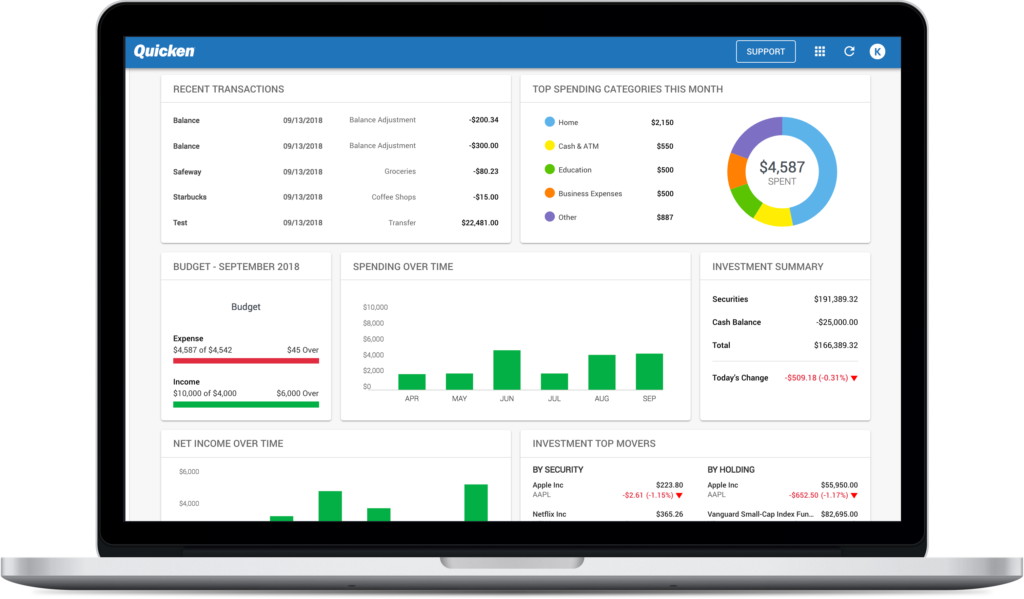
Quicken Premier costs $8.49/month billed annually, and is available for PC and Mac. Note that Quicken is software, not an online app.
Fidelity Full View
The last investment tracking app on our list is Fidelity Full View. Fidelity’s tool is powered by eMoneyAdvisor, a finance app used exclusively by financial planners. I have access and use eMoneyAdvisor through a financial planner I work with (although I manage our own investments). With Fidelity Full View, however, you can get many of eMoneyAdvisor’s tools without going through an advisor.
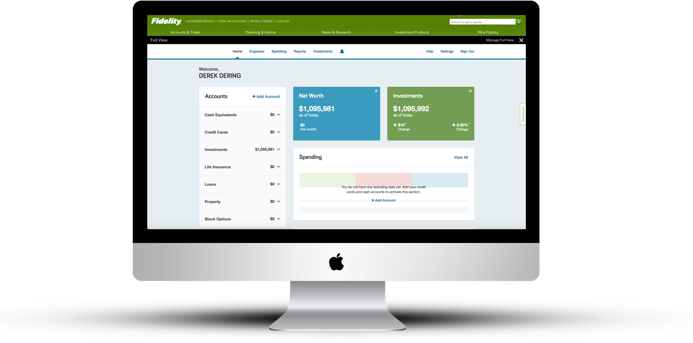
For example, Full View enables you to track your portfolio’s performance and asset allocation. You can track your net worth and spending as well. It doesn’t, however, offer the same reporting that eMoneyAdvisor offers.
How to Choose the Best Investment Tracking App
The best way to track your investments depends on the complexity of your portfolio. For those with just a single account, a portfolio tracking app isn’t necessary. If all of your investments are in a 401k at work, you can simply track and manage your investments through the brokerage that holds your 401k. Likewise, if you have a single IRA account, you can track that investment easily wherever it is being held.
If, like me, you have multiple investment accounts, a tracking app is the best way to manage your investments. That’s particularly true if you hold investments at different brokers. This is common when individuals open up IRAs at brokers and have 401k’s elsewhere. It’s also common with spouses who often have retirement accounts at different financial institutions.
For these types of portfolios, an investment tracker that automatically downloads transactions and balances is ideal. Here, you want to look for an investment app that offers tools to help you analyze your portfolio. The most important tools give you insight into your asset allocation, investment fees and retirement readiness.
We rate Empower as the absolute best investment tracking app, because it does all of this for free. For High Net Worth Individuals or those wanting to track a variety of asset types, including crypto, Kubera is an excellent option. The other apps in our list are also good options.
Methodology
The methodology used in selecting the best investment tracking apps was simple–I’ve used each and every one of them, along with dozens of other options not listed. In most cases, I’ve used the software for years.
I based the selection on several factors:
- Cost
- Automation
- Investment analysis tools
- Retirement planning tools
- Ease of use
- Dashboards, charts and reports
I’m also in the process of evaluating other stock tracking apps including Koyfin, Sharesight and Snowball Analytics. I’ll update this article soon.
FAQs
What is the best investment tracking app?
In my view, the single best investment tracking tool is Empower. It’s free, automated, and has a wealth of investment analysis tools.
Are investment tracking apps hard to use?
Some are and some are not. With tools like Empower or Quicken, It’s simply a matter of connecting your investment accounts. Once connected, the tools analyze all of the data and present it in a way that’s easy to understand.
Some software that must be downloaded, however, has a much higher learning curve. And for that reason did not make our list of the best options.
How do I set up investment tracking alerts with many of the tools on our list?
You can get notified when any transactions occur in your account. Empower, for example, will email you every day, week or month to notify you of any transactions in your linked accounts.

